In construction projects, leakage in elevator shafts and catch basins has always been one of the critical challenges troubling property owners. These shafts are located in the underground part of buildings, and if waterproofing measures are inadequate, it often leads to leakage problems, which in turn trigger a series of engineering issues and potential safety hazards.
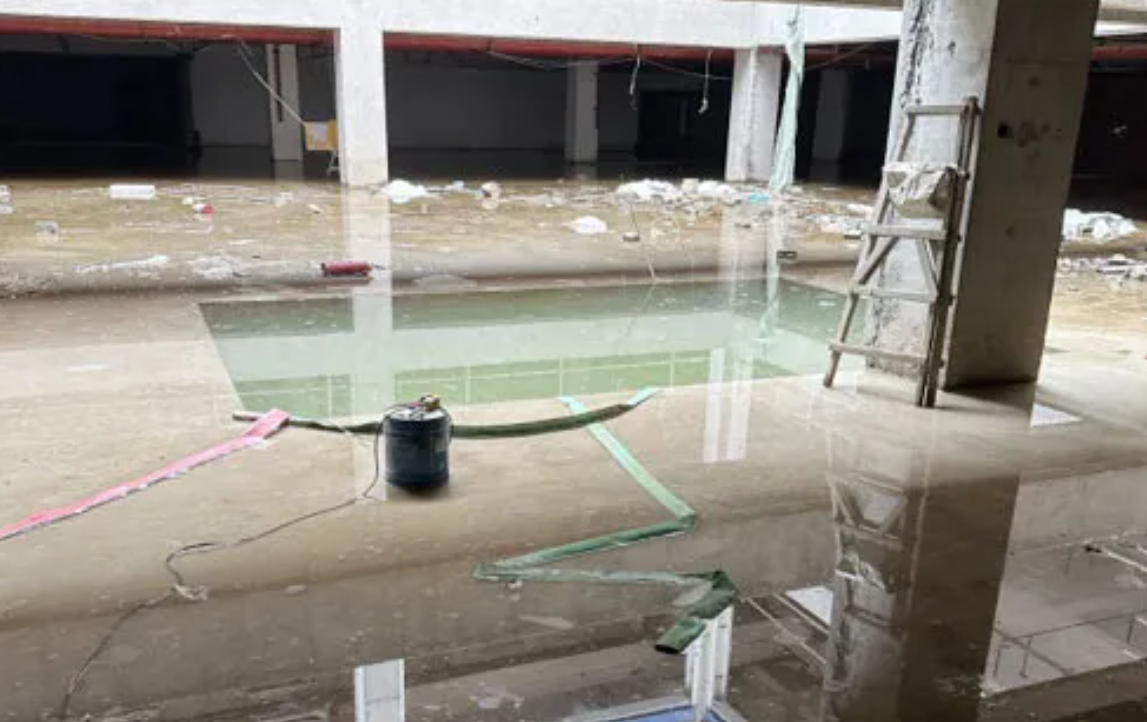
So, once these areas have leaks, how should we effectively repair them? Here, we share a leakage repair case undertaken by our Qinglong Qingyuan Zhou team in a large commercial centre in Zhuhai. We hope to provide some valuable insights and assistance.
I. Introduction to Leak Repair Project
This project involves leakage repair in the basement floor, shear walls, cast-in-place belts, wall penetrations, elevator shafts, and catch basins. Severe water seepage on-site has significantly affected the regular use of the building. Referring to similar past project experiences, we have developed specialised waterproofing solutions to address these leaky areas.

II. Analysis of Leakage Situation

Based on on-site surveys and related building structures, the causes of leakage are as follows:
- Cracks and deformation or even damage of concrete structures due to concrete shrinkage, temperature stress, etc., leading to later enlargement of damaged concrete surfaces, high groundwater pressure, and easy occurrence of leakage.
- The internal concrete pouring of elevator shafts and catch basins was not compacted, resulting in a loose bottom structure. Various parts are prone to leakage, especially at detailed junctions where proper handling was not done.
- The location of the cast-in-place belt is a secondary poured structure with construction joints, poor overall structural integrity, and prone to cracking, leading to water seepage.
- Poor sealing or use of sealing materials with poor tensile and durability properties at the roots of wall penetration pipes, making them susceptible to leakage after structural settlement or material ageing.
High groundwater pressure quickly penetrates through gaps, causing widespread leakage.
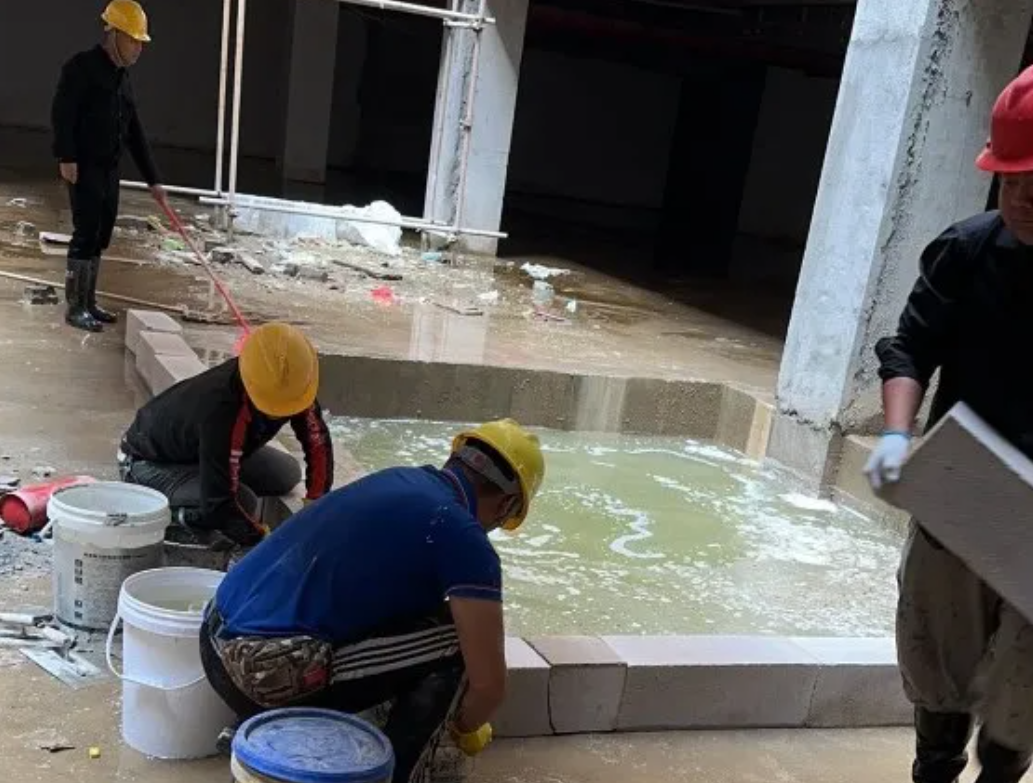
III. Preparation for Leak Repair Construction
- Technical Preparation
- Construction workers and managers familiarise themselves with construction drawings and understand construction methods and special requirements for construction at specific junctions.
- Construction workers have undergone technical and safety briefings.
- Material brands are finalised, and any questions regarding related drawings are addressed.
- Tool Preparation
Wire brushes, mixing buckets, electric mixers, caulking guns, scrapers, brooms, rulers, electric drills, hammers, high-pressure grouting machines, etc.
- Material Preparation
Qinglong Rapid Leak Plugging Solution, Qinglong Durable Water Gel, Qinglong Leak Plugging Glue, Qinglong Concrete No.1, epoxy resin, calcium aluminate quick-drying concrete.
- Site Preparation
- To better coordinate leak repair construction, the waterproofing substrate must meet requirements for a solid, compact, free of visible water and oil-free surface.
- Determine management organisation and work teams and allocate sufficient labour according to project progress plan requirements.
IV. Design Basis for the Scheme
- Basis for Scheme Preparation
- "Technical Specification for Waterproofing of Underground Works" GB50108-2008
- "Unified Acceptance Standard for Construction Quality of Building Engineering" GB50300-2001
- Principles of Scheme Design Waterproofing and drainage combined: drainage pressure reduction, grouting waterproofing, Multiple defences: combining multiple waterproofing methods to resist water pressure to a greater extent, increasing the waterproofing service life.
V. Repair Construction Process
Based on Qinglong material characteristics and construction sites, the construction process is as follows:
- Drainage pressure reduction, base chiselling:
Remove accumulated water from the elevator shaft floor. When there is no water accumulation on the floor, sprinkle an appropriate amount of cement powder onto the floor to observe leakage conditions. Clear debris from the floor and clean it to the structural layer. Use Qinglong Rapid Leak Plugging Solution to squeeze at leaking spots to reduce leakage. Once the floor is free of standing water, chisel away all loose structures from the floor, and if there are loose structures on the sidewalls, remove them. Chisel "V"-shaped grooves along cracks (if water still seeps out after chiselling, apply Qinglong Rapid Leak Plugging Solution while draining water to harden the base until there is no standing water at the bottom).
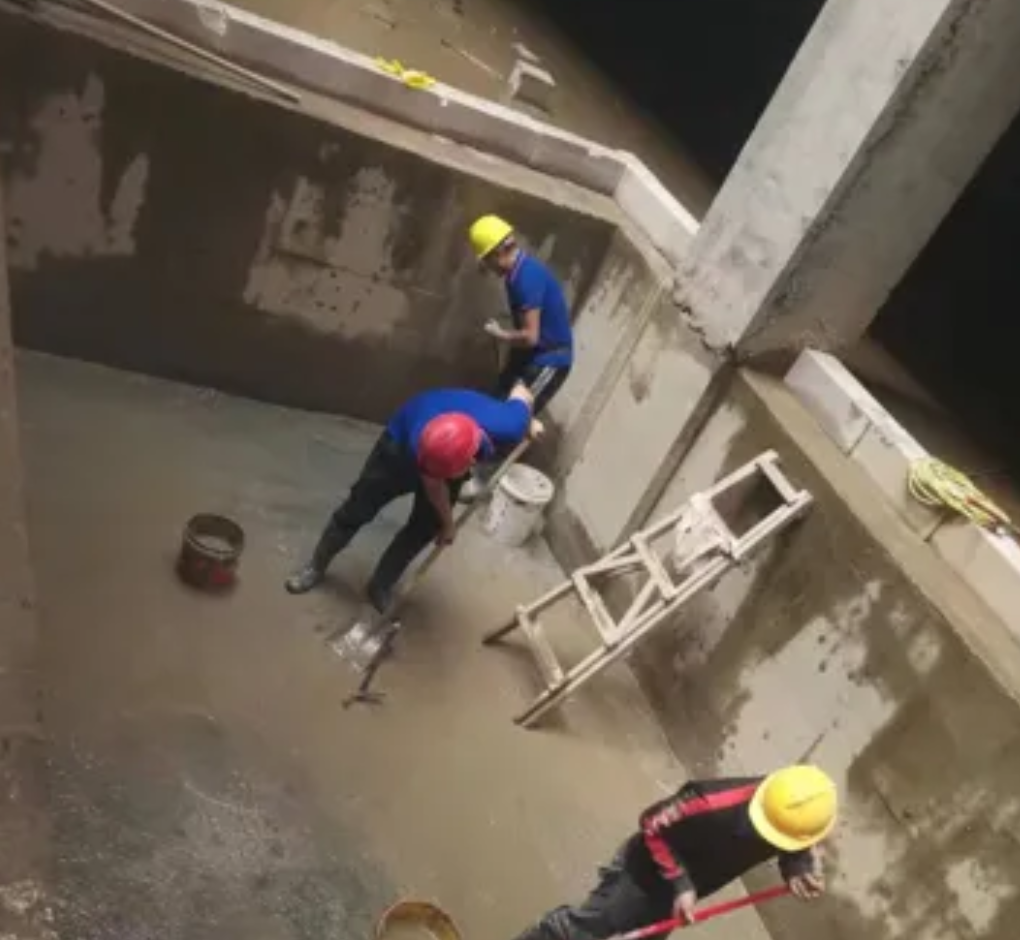
- Base treatment:
- Clean the chiselled base of dust, floating debris, loose layers, etc. The base should be solid, clean, level, dust-free, and oil-free.
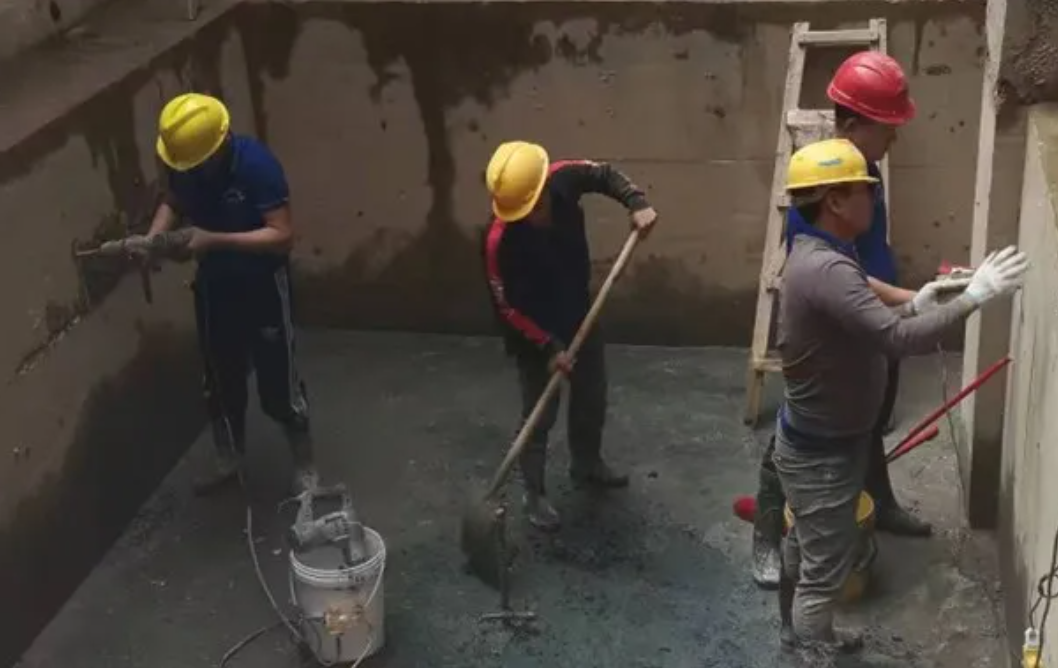
- Applying Qinglong Rapid Leak Plugging Solution (embedding water-stop needles on sidewalls):
- Mix Qinglong Rapid Leak Plugging Solution quickly into a paste and knead it into a lump. Apply the prepared leak-plugging solution evenly to the floor; it should be uniform, flat, and defect-free; apply it to sidewall cracks. When the paste starts to heat up, quickly press it into the "V" groove, embed the water-stop needles into the sidewall groove, and flatten it. Once hardened, it is ready.
- Embedding water-stop needles on the floor, injecting Qinglong Durable Water Gel:
After applying the leak plugging solution to the floor and letting it dry, clean the surface and insert water-stop needles into the floor so that they can reach the structural layer. Then, inject Qinglong Durable Water Gel into the floor and sidewall needle locations for deep-seated leak plugging. Single-hole or sectional grouting methods can be used depending on the leakage area size. Inject grout into the leakage point using a dedicated grouting machine until it is filled. From one end to the other, inject each needle in turn. The grouting pressure should meet requirements, with gradually increasing pressure to prevent sudden pressure changes. After reaching the specified pressure, maintain stable pressure. After grouting the remaining leakage areas, remove the water-stop needles, clean them, and seal the grout holes with Qinglong Rapid Leak Plugging Solution. Treat the remaining leakage areas with grouting depending on the construction site conditions. After grouting, remove the water-stop needles, clean them, and seal the grout holes with Qinglong Rapid Leak Plugging Solution.
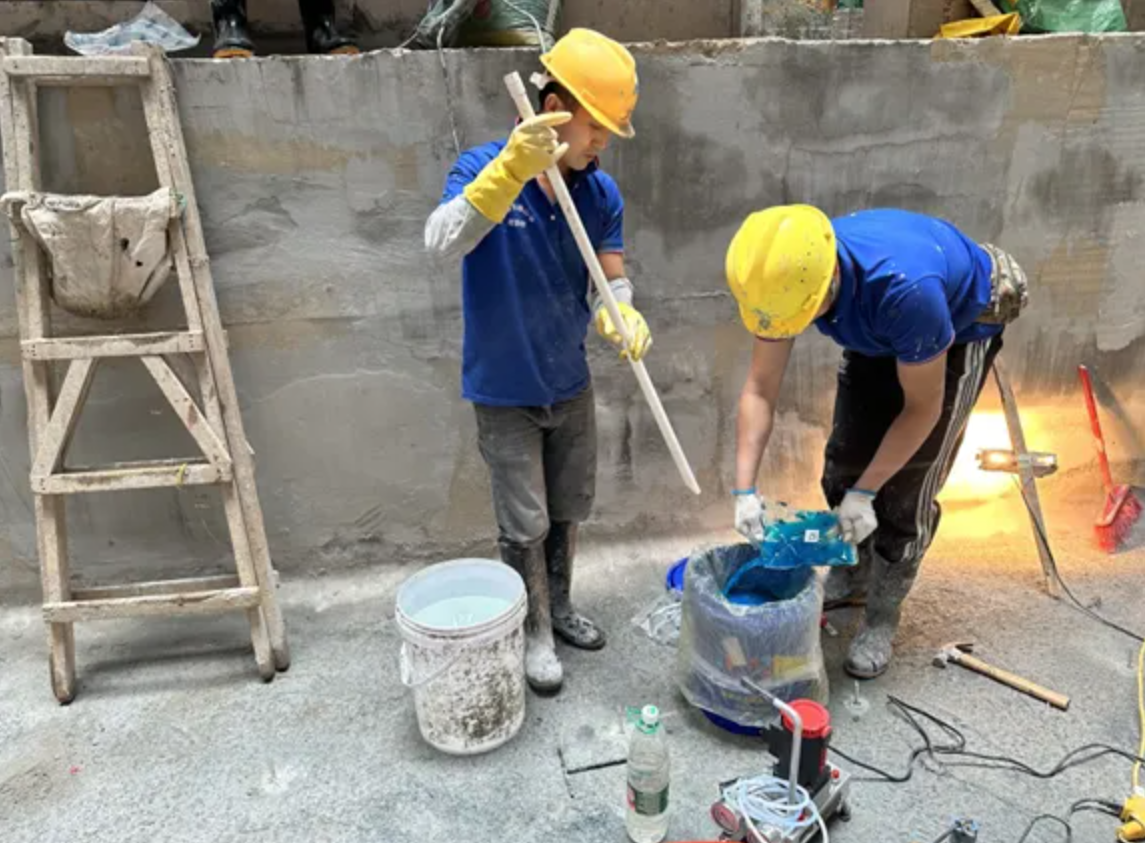
- Embedding water-stop needles on he floor and sidewalls, injecting Qinglong Leak Plugging Glue:
Clean the surface according to the leakage situation, insert water-stop needles into the floor and sidewalls, then inject Qinglong Leak Plugging Glue for superficial leak plugging. Single-hole grouting or sectional grouting methods can be used depending on the leakage area size. Inject grout into the leakage point using a dedicated grouting machine until it is filled. From one end to the other, inject each needle in turn. The grouting pressure should meet requirements, with gradually increasing pressure to prevent sudden pressure changes. After reaching the specified pressure, maintain stable pressure. After grouting the remaining leakage areas, remove the water-stop needles, clean them, and seal the grout holes with Qinglong Rapid Leak Plugging Solution.
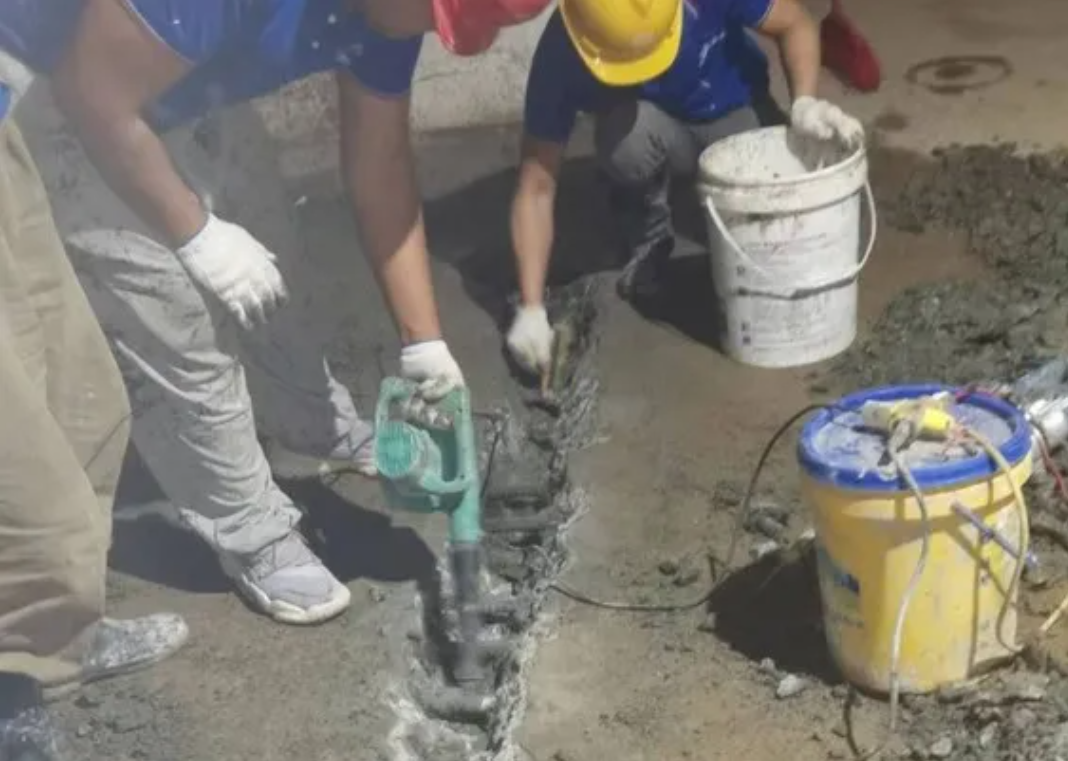
- Pouring calcium aluminate quick-drying concrete on the floor, repairing and smoothing sidewalls:
- After grouting, for areas with high water pressure, large concrete voids, and poor compactness, pour calcium




